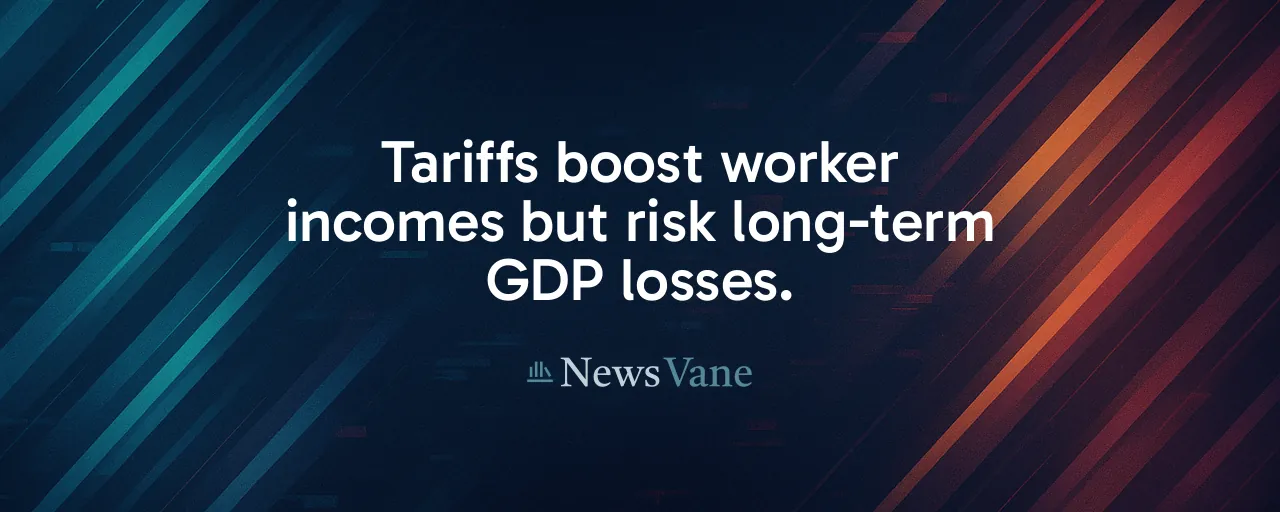A Booming Economy Grabs Headlines
President Donald Trump's second term has kicked off with a wave of economic optimism. Stock markets are hitting record highs, consumer confidence is climbing, and blue-collar wages are seeing their biggest gains in decades. The White House points to its America First trade agenda, heavy on tariffs and tax cuts, as the engine behind this surge. Banks like JPMorgan and Goldman Sachs have raised their S&P 500 forecasts, signaling Wall Street's enthusiasm. For many Americans, the numbers paint a picture of prosperity.
Beneath the surface, questions linger. While the economy hums, analysts warn of risks tied to ballooning federal debt and the long-term effects of tariffs. The current boom, driven by bold policy moves, has sparked a national conversation about sustainability. Are these gains built to last, or are they masking deeper challenges? A deeper look into the data unpacks the benefits and potential pitfalls of today's economic landscape.
Tariffs: A Double-Edged Sword
The White House touts tariffs as a win for American workers, and early evidence supports the claim. A recent Treasury-backed study found that prices for imported goods dropped faster than overall prices, suggesting tariffs haven't triggered the feared price hikes. Blue-collar workers, especially in manufacturing, are seeing real wage increases, with inflation-adjusted gains nearing 2 percent in just five months. For many households, this translates to tangible financial relief.
Still, the picture isn't uniformly rosy. Research from the Wharton School projects that tariffs could shave 6 percent off long-term GDP and cut wages by 5 percent if costs are fully passed to consumers. Low-income families, who spend more on tariff-sensitive goods like clothing and shoes, could feel the pinch most. While short-term price stability holds, experts note that delayed cost pass-through and currency shifts may only postpone the impact. The debate centers on whether these trade barriers will sustain growth or backfire.
Tax Cuts Supercharge Growth but Strain Budgets
Paired with tariffs, Trump's tax cuts have injected energy into the economy. The One Big Beautiful tax package, as supporters call it, has spurred corporate investment and consumer spending. The S&P 500's climb to cycle highs reflects investor confidence in this stimulus. Small businesses and middle-class households report more disposable income, fueling retail and service sectors. The Council of Economic Advisers credits these cuts with sustaining job growth, with 139,000 private-sector jobs added in May alone.
Still, the fiscal cost raises red flags. Estimates suggest the tax cuts could reduce federal revenue by $4 to $5 trillion over a decade. Combined with tariff-driven trade disruptions, this could push the national debt to new heights. Congressional Democrats argue that the benefits skew toward corporations and high earners, potentially widening inequality. The tension lies in balancing immediate economic boosts against the risk of future budget crises.
Consumer Confidence Soars, but Cracks Appear
Americans are feeling better about the economy than they have in months. Surveys from the Conference Board and University of Michigan show consumer sentiment rebounding after a five-month dip. With core inflation at 2.8 percent, its lowest since 2021, fears of runaway prices have faded. Gas prices, hovering below $3 per gallon, add to the sense of relief. For many, the combination of rising wages and stable costs feels like a long-awaited win.
Not everyone is celebrating. The labor force participation rate has slipped to 62.4 percent, a two-year low, hinting at underlying weaknesses in job market dynamics. Low-income households, while benefiting from wage growth, remain vulnerable to even modest price increases in essentials like apparel. The Federal Reserve, tasked with balancing growth and inflation, faces pressure to avoid premature rate hikes that could derail the recovery. Confidence is up, but it's fragile.
Lessons From the Past Shape Today's Debate
The current economic strategy echoes policies from Trump's first term and earlier eras. In 2018, tariffs briefly revived manufacturing but failed to shrink the trade deficit. The 1980s saw supply-side tax cuts spark growth, only to leave deficits in their wake. Today's approach, blending protectionism with fiscal stimulus, is the most aggressive since the 1930s, when high tariffs deepened the Great Depression. These historical parallels inform both optimism and caution.
Academics point out that tariffs often deliver short-term gains but risk long-term losses. Most economists agree that sustained wage growth depends on productivity, not just policy stimulus. The challenge is clear: can the U.S. leverage its current momentum to build a resilient economy, or will history repeat with unintended consequences? The answer hinges on execution and adaptability.
Navigating Trade-Offs for a Stable Future
The economic boom under Trump's policies has delivered real benefits, from higher wages to soaring markets. The risks, rising debt, potential price hikes, and trade tensions, demand attention. Policymakers face a delicate balancing act: sustaining growth without ignoring structural challenges. Congressional Republicans push for permanent tax cuts, while Democrats advocate for targeted relief to shield vulnerable households. Both sides see value in jobs but differ on how to protect them.
Areas of agreement exist. Lawmakers could tie tariffs to clear trade benchmarks, ensuring they don't outstay their purpose. Wage subsidies for low-income workers, funded by tariff revenue, could ease cost-of-living pressures. A bipartisan commission to monitor prices and adjust policies dynamically might bridge divides. These steps prioritize economic stability over ideological wins, offering a path to preserve gains while addressing risks.
The road ahead requires precision. Businesses are already retooling supply chains, and the USTR juggles thousands of tariff exemptions. Legal challenges to tariff authority loom, and global trade partners are poised to retaliate. For Americans, the stakes are high: today's prosperity requires nurturing, not squandering. By focusing on data-driven solutions and pragmatic compromise, the nation can chart a course that benefits workers, businesses, and the broader economy.
